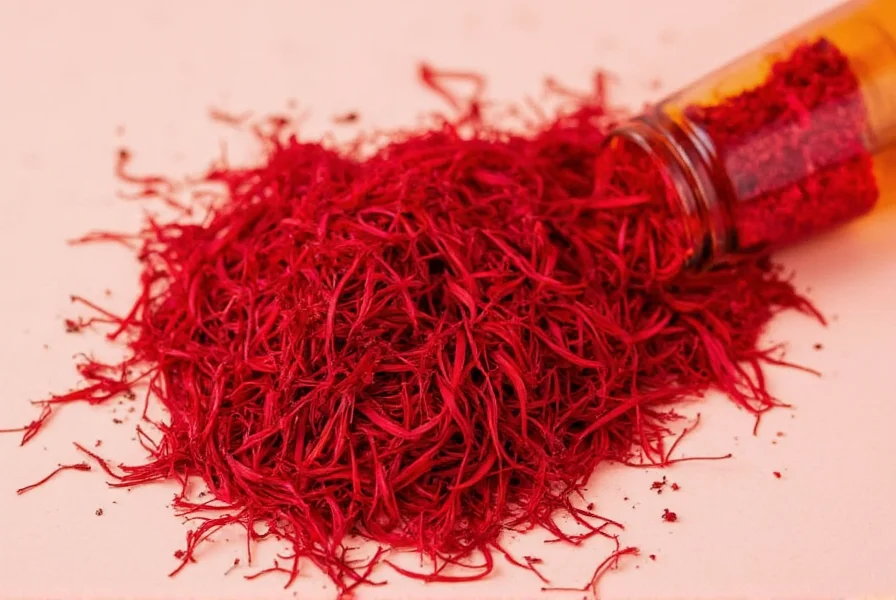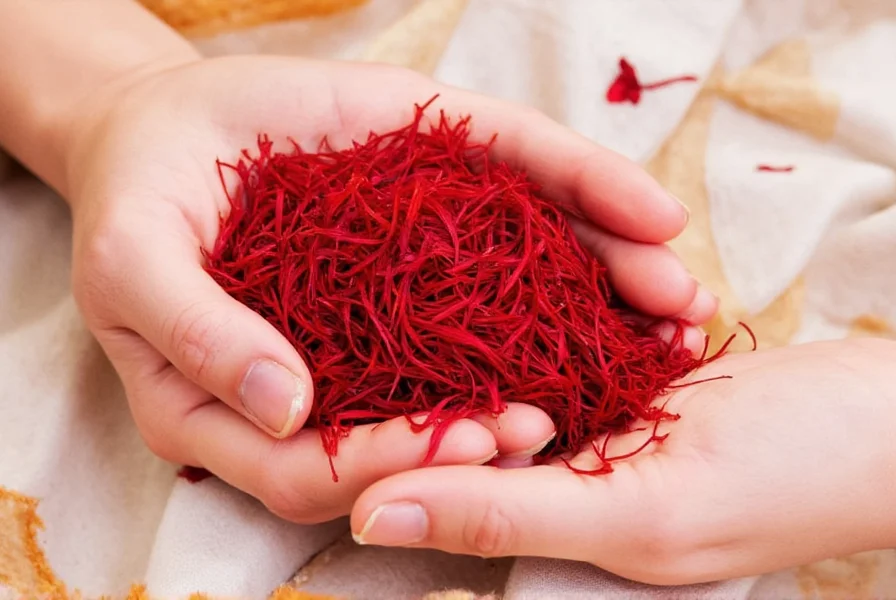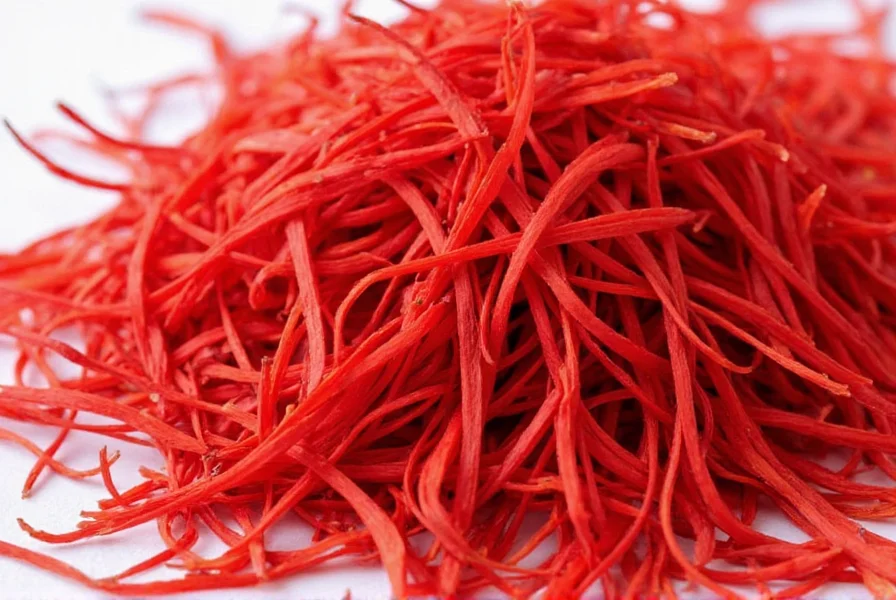Crystal saffron refers to a specialized form of saffron where the stigmas undergo a unique processing technique that creates crystalline structures, enhancing solubility and flavor release. Unlike regular saffron threads, crystal saffron dissolves completely in liquids, providing more consistent color and aroma distribution in culinary applications. This premium form maintains all the characteristic compounds of high-quality saffron—including crocin, picrocrocin, and safranal—but offers improved usability for professional chefs and home cooks seeking precise flavor control.
When exploring the world of premium saffron varieties, crystal saffron represents an innovative processing method that addresses common challenges with traditional saffron threads. This specialized form has gained attention among culinary professionals seeking consistent results in delicate preparations where even distribution of saffron's distinctive flavor and color is critical. Understanding what sets crystal saffron apart requires examining both its production process and practical applications.
What Exactly Is Crystal Saffron?
Crystal saffron isn't a different botanical variety but rather a specific processing technique applied to premium saffron threads (Crocus sativus stigmas). The production involves carefully controlled dehydration and crystallization processes that transform the delicate threads into soluble crystal formations. During this specialized treatment, saffron's active compounds are preserved while creating a structure that readily dissolves in both hot and cold liquids—a significant advantage over traditional threads that often require steeping.
This processing method represents an evolution in saffron preparation techniques, developed to overcome limitations of conventional saffron use. While traditional saffron requires careful infusion to release its full flavor potential, crystal saffron's molecular structure allows for immediate and complete dissolution, ensuring every drop of liquid receives consistent saffron infusion. This characteristic makes it particularly valuable for applications where precise flavor distribution is essential.
Crystal Saffron vs. Traditional Saffron: Key Differences
| Characteristic | Crystal Saffron | Traditional Saffron Threads |
|---|---|---|
| Solubility | Completely dissolves in liquids | Requires steeping; leaves residue |
| Flavor Distribution | Immediate and uniform | Can be uneven without proper technique |
| Preparation Time | Instant incorporation | Requires 15-30 minute steeping |
| Visual Appearance | Translucent golden crystals | Deep red threads |
| Storage Stability | Excellent moisture resistance | Vulnerable to humidity damage |
The most significant practical difference lies in application. Crystal saffron eliminates the waiting period traditionally required for saffron infusion, making it ideal for cold preparations like chilled soups, cocktails, and desserts where heat-based extraction isn't possible. Professional pastry chefs particularly value this attribute when creating saffron-infused creams and custards that require even color distribution without visible threads.
Quality Assessment of Crystal Saffron
Evaluating crystal saffron quality follows similar principles to traditional saffron but with additional considerations specific to its crystalline form. The ISO 3632 standard still applies, measuring crocin (coloring strength), picrocrocin (bitterness), and safranal (aroma) content. However, with crystal saffron, you should also assess:
- Dissolution rate - High-quality crystal saffron should dissolve completely within 30 seconds in room-temperature liquid
- Color consistency - The resulting liquid should show uniform golden hue without streaking
- Residue presence - Authentic crystal saffron leaves no visible particles after dissolution
- Aroma development - The characteristic hay-like fragrance should emerge immediately upon contact with liquid
When purchasing crystal saffron, look for products that provide laboratory analysis showing ISO 3632 category ratings (I, II, or III). Category I represents the highest quality with crocin levels above 190. Reputable suppliers will disclose this information transparently, as the crystallization process shouldn't diminish the saffron's inherent quality markers.

Practical Applications in Culinary Arts
Chefs working with crystal saffron appreciate its versatility across temperature ranges. Unlike traditional threads that require heat activation, crystal saffron performs equally well in both hot and cold preparations. This opens creative possibilities for dishes where saffron's distinctive flavor was previously difficult to incorporate evenly.
Consider these professional applications where crystal saffron shines:
- Cold soups - Perfect for vichyssoise or gazpacho where traditional saffron wouldn't properly infuse
- Cocktails - Creates beautifully colored, evenly flavored saffron martinis without sediment
- Pastry creams - Ensures uniform golden color in crème pâtissière and diplomat cream
- Ice creams - Distributes flavor evenly without requiring heated base preparation
- Marinades - Penetrates proteins more effectively than thread-based infusions
For home cooks, crystal saffron simplifies saffron preparation while reducing waste. The precise measurement capabilities (often available in pre-portioned packets) help prevent the common mistake of using too much saffron, which can create overpowering bitterness. A single crystal packet typically equals the infusion power of 15-20 traditional threads, making dosage more consistent.
Storage and Shelf Life Considerations
Crystal saffron generally offers improved shelf stability compared to traditional threads. The crystallization process creates a more stable molecular structure that resists degradation from light, air, and moisture. Properly stored in an airtight container away from light, high-quality crystal saffron maintains its potency for 2-3 years—approximately 50% longer than premium thread saffron.
When storing crystal saffron, avoid humidity exposure which can cause premature dissolution. Unlike traditional saffron that shows visible degradation (fading color), crystal saffron's deterioration is less apparent until used. Always check for complete dissolution capability and vibrant golden color in the resulting liquid to verify freshness.

Addressing Common Misconceptions
Several misconceptions surround crystal saffron that deserve clarification. First, it's not "artificial" or "synthetic"—it's made from genuine saffron stigmas through specialized processing. Second, while convenient, it doesn't inherently contain more active compounds than premium thread saffron; the difference lies in delivery method, not concentration.
Another common misunderstanding involves pricing. Crystal saffron typically commands a premium price (20-30% higher than equivalent quality thread saffron), but this reflects the additional processing rather than superior inherent quality. When comparing value, consider the reduced waste and improved usability that may justify the higher initial cost for certain applications.
Conclusion: When Crystal Saffron Makes Sense
Crystal saffron represents a valuable innovation for specific culinary applications where even distribution and immediate infusion are critical. While traditional saffron threads remain preferable for certain preparations (like rice dishes where visual thread presence is desirable), crystal saffron solves longstanding challenges with cold infusions and precise flavor control.
For serious cooks and professional chefs, having both forms available allows for technique-specific selection. Understanding the unique properties of crystal saffron helps determine when its specialized advantages outweigh the slightly higher cost. As with all saffron products, quality verification through ISO ratings and reputable sourcing remains essential regardless of form.
What is the main advantage of crystal saffron over traditional saffron threads?
The primary advantage of crystal saffron is its complete solubility in both hot and cold liquids, providing immediate and uniform distribution of flavor and color without requiring steeping time. This makes it particularly valuable for cold preparations like chilled soups, cocktails, and desserts where traditional saffron threads wouldn't properly infuse.
Does crystal saffron contain the same active compounds as regular saffron?
Yes, high-quality crystal saffron contains the same active compounds (crocin, picrocrocin, and safranal) as traditional saffron threads. The crystallization process preserves these compounds while altering the physical structure to enhance solubility. Quality crystal saffron should meet the same ISO 3632 standards for coloring strength, flavor, and aroma as premium thread saffron.
How can I verify if crystal saffron is authentic and high quality?
To verify authenticity and quality, check for ISO 3632 certification showing Category I, II, or III ratings, with Category I being highest quality. Authentic crystal saffron should dissolve completely within 30 seconds in room-temperature liquid without leaving residue. It should produce a vibrant golden color and characteristic hay-like aroma immediately upon contact with liquid. Reputable suppliers provide laboratory analysis documentation for their products.
Is crystal saffron worth the higher price compared to traditional saffron?
Crystal saffron typically costs 20-30% more than equivalent quality thread saffron due to additional processing. It's worth the premium when you need immediate, even distribution in cold preparations or precise flavor control. For traditional applications like rice dishes where visual threads are desirable, regular saffron may be more appropriate. Consider reduced waste and improved usability when evaluating value for specific culinary applications.
How should I store crystal saffron to maintain its quality?
Store crystal saffron in an airtight container away from light, heat, and humidity. Unlike traditional threads, it's less vulnerable to moisture damage but can prematurely dissolve if exposed to humidity. Properly stored, high-quality crystal saffron maintains potency for 2-3 years—about 50% longer than premium thread saffron. Always verify freshness by checking for complete dissolution capability and vibrant golden color in the resulting liquid.











 浙公网安备
33010002000092号
浙公网安备
33010002000092号 浙B2-20120091-4
浙B2-20120091-4